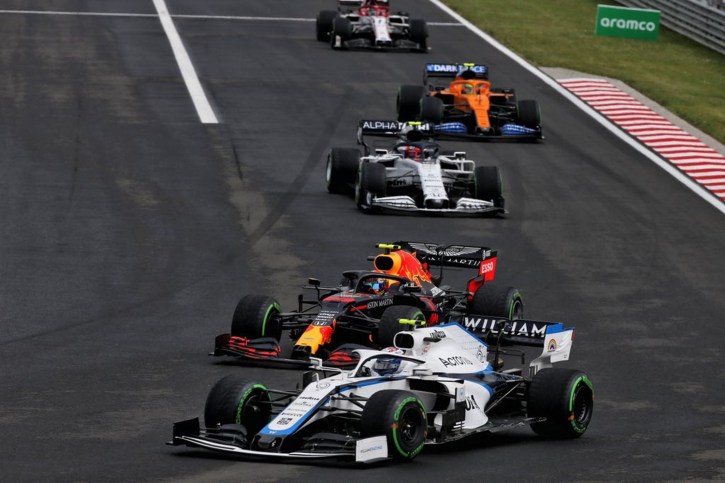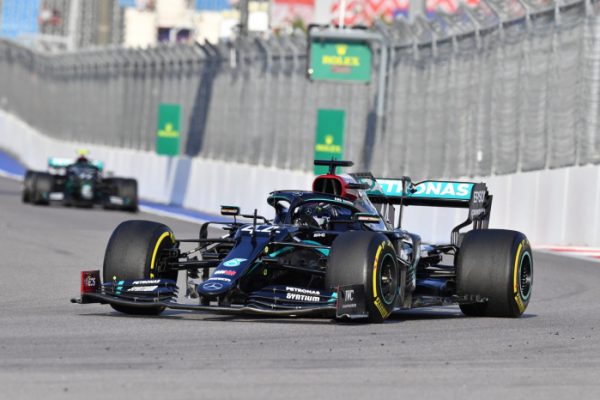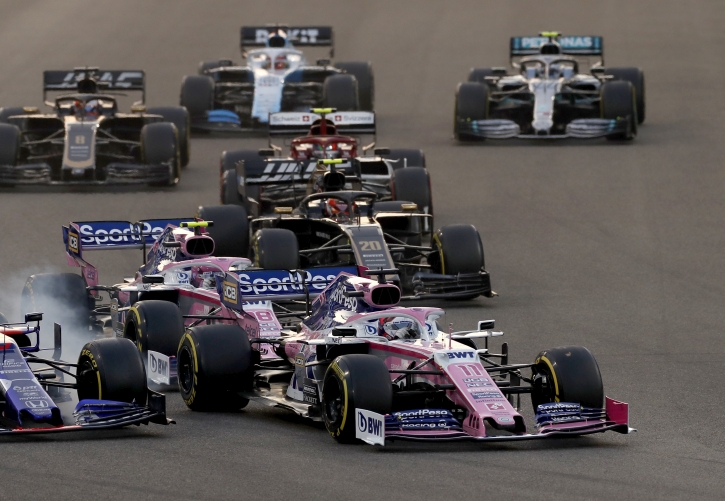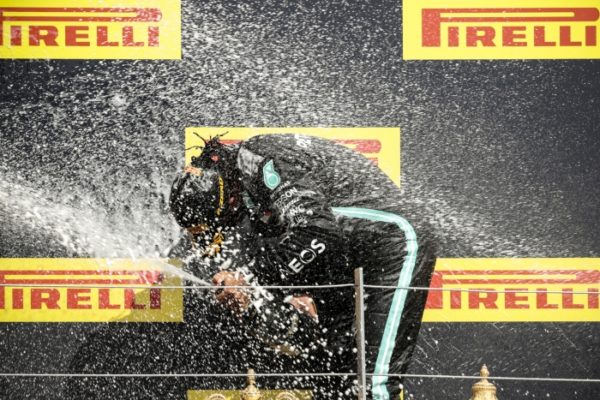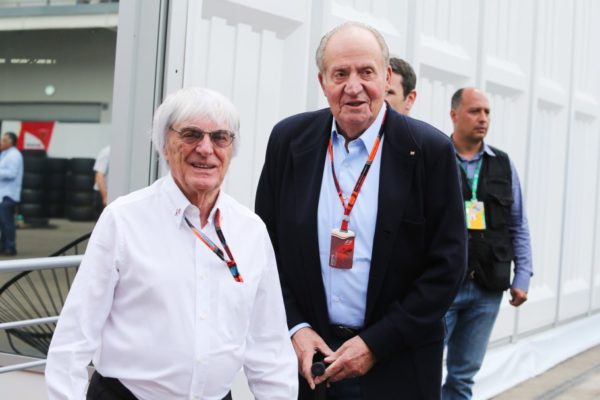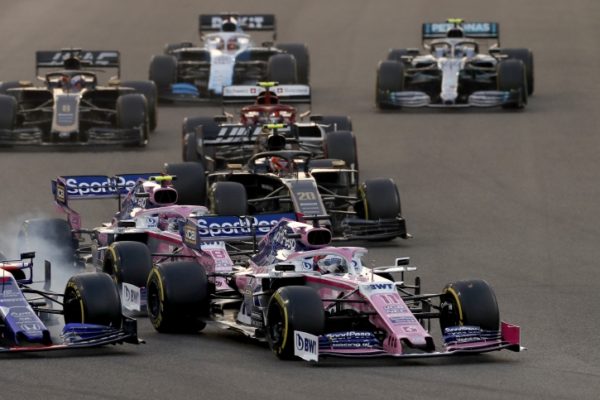All drivers that end up in Formula 1 possess prolific talent. While, these days, some drivers pay themselves into the sport, even they have to reach a certain level of performance to make it that far. There are those, however, that distinguish themselves as greats among greats. Formula 1 is the pinnacle of motor sport and, over the next few weeks, we’ll cover the men that have, through the years, managed to end up at the sport’s pinnacle – if you’ll pardon the cheap pun.
Formula 1, however, was only born in 1950 and it would be grossly unfair to those who pioneered motor racing to ignore all who went before. Emotive names like Campari, Rosemeyer, Varzi and Caracciola immediately spring to mind – racing greats who drove the all-conquering Mercedes-Benzes and Auto-Unions in a time when mighty Germany was out to display to the world their engineering supremacy. One man, however, stood out even from these names: Tazio Nuvolari – The Flying Mantuan. In the words of probably his biggest ever fan – Ken Purdy – these men may on occasion have beaten Nuvolari, but they never defeated him.
The Devil from Mantua was great for many reasons. His undeniable raw speed was but one aspect of what endeared the diminutive Italian to the racing masses. Despite his size he was larger than life, he was fearless, lived for racing and racing only and never, ever drove a “percentage” race. The man was out there to win – regardless of the odds, regardless of what’s at stake. This is best illustrated, for once, by statistics: In his 30 year racing career he came second only 17 times and won 72. He would rather crash out trying than settle for second or third – no matter what he drove. He was, literally, born to drive. There was even talk in Italy that he had made a “pact with the devil” and that there was some sort of black magic behind his uncanny natural skill. Some would even now maintain that he was the greatest driver ever to have graced the cockpit of a race car.
The reality of behind it all, however, is simpler. His reactions were inhumanly fast, he had a lifetime of experience in all forms of motor racing and, while he was often accused of possessing immense courage, it was catching up in truth more a complete lack of fear. Any danger that he might have faced simply paled into utter insignificance compared to his overwhelming lust to win. This was not a result of him never being injured. Oh no, the man broke most of the bones in his body at some point in his life – all due to incidents behind the wheel.
Born in 1892, he was a speed-freak by the age of 5. His father was a horse-breeder and he used to grab onto the tail of a handy horse and try and make it run. This resulted in his first taste of serious injury – a horse kicking him and breaking his shin. This did nothing to put him off danger. He learned to ride a bike at 14 and became an ambulance driver in WWI. Far from distinguishing himself however, his commanding officer’s parting words to him were “You’ll never learn how to drive a car”.
It was indeed with motor bikes that Nuvolari would first make a name for himself. He started in the early 20’s and won nothing for the first three years as he rode only what he could afford. After his first win in 1923, however, a succession of victories followed. Most notable was his Monza victory in 1928. He fell badly during practice, breaking both his legs – the day before the race. The next day, having been told to stay in bed for a month, Nuvolari showed up at the track with both his legs in casts, had his mechanics tie him to the bike and hold him upright at the starting line. 300 miles on his mechanics were waiting to catch him at the finish line – which he crossed in first place…
It was shortly before this that he started taking an interest in things with four wheels and a steering wheel. Two years later he would resolve to racing cars exclusively, going head-to-head with his one great rival – Achille Varzi. They were the Prost and Senna of their time. Varzi was a mathematical driver. He drove by the book, he never broke cars. Every line was perfect, effort did not come into it and he never had an accident – unless of course you count the one that killed him. In stark contrast was the Mantuan who could never be described as a rules man. Despite being described (by none other than Ferdinand Porsche) as a great mechanic he would think nothing of a car breaking up underneath him in the push to win – he was not going to baby the thing. He also drove without concern for what was considered accepted and proven racing principles. Once an authority of the time took a motoring journalist around the track after a race to show him the racing line – pointing specifically to Nuvolari’s tracks. He pointed to the majority of tyre tracks that so obviously denoted the accepted line and then pointed to Nuvolari’s tracks. “Obviously anyone entering this bend in that attitude and at that speed must crash, there is no way out. But Nuvolari didn’t crash. He was faster through here than anybody else. And he won.” Nuvolari studied the surfaces with enormous focus – often riding half on the shoulder during practice to see what it would be like and, once, in a tiny Fiat sedan, demonstrating to a stunned crowd the use of small bumps in the road surface to change course. He is also generally credited with the origin of four-wheel-drift. He was never modest about his talents – claiming that he had a fine sense of balance and that, at any time and any situation, he could tell to the kilogram the amount of weight on each wheel of the car. A bold statement indeed but those who had the privilege of seeing him speed through corners while breaking all the rules didn’t doubt it for a heartbeat.
He made more statements that would seem preposterous at face value of course – one of which was his casual remark that he never used the brake when he was racing. As crazy as this may seem he proved it by driving the 1934 Grand Prix of Italy without a drop of brake fluid in his Maserati. The mechanics had removed the brake fluid for the weigh-in and had forgotten to put it back. Nuvolari just didn’t bother to tell them until after the race. The biggest difference between the Prost-Senna dueling duo and Varzi vs Nuvolari must be their off-track relationship. Such was the speculation over who was better that a head-to-head race was proposed and even arranged. Nuvolari, however, knew all too well his own win-or-die attitude and said to Varzi: “If I should lose this race, I should never again find peace. If you should lose, I should be extremely sorry for you, and in any case out friendship would be tainted. If you like we’ll run, but I don’t think it’s worth it.” They called the whole thing off and went to have a drink together. When they were not on track, Varzi would refer to Nuvolari only as “Maestro” – the ultimate plaudit from any Italian.
Nuvolari won a great many races but the stories really worth telling are of the races where he won despite, realistically, having no chance at all. Not the ones where he merely had inferior machinery – no, this was most of the time anyway considering the fact that he was almost always behind the wheel of an Alfa, up against the original Silver Arrows and Auto-Unions, themselves being driven by the legendary drivers of the time.
We’ll start with 1933 at Monaco when, as was so often the case, he was running wheel-to wheel with Varzi. Mid-race Nuvolari’s car burst into flames but he kept going until the engine blew up about half a mile from the finish line. Even then he did not give up, pushing the car to within 200 yards of the finish line where he himself collapsed.
Then there was 1935 at the infamous Nurburgring. Almost 23km of treacherous corners, inclines, declines and blind rises, it is a track not for the faint hearted. Here Nuvolari was driving an Alfa Romeo which was so vastly inferior to the German competition that it was absolutely laughable. To make matters worse, Nuvolari showed up with his right leg in a cast – meaning all brake, clutch and accelerator work would have to be done with his left foot. The factors against him, however, do not end there. After he took the lead the Alfa pits were in a state of absolute hysteria and such was the enthusiasm when he came in to refuel that the mechanic pumping the fuel broke the handle right off the pump! He lost significant time being refueled from cans and came out in 5th place, driving like a demon and only overtaking the Mercedes of Von Brauchitsch right before the finish line.
Of course his single most famous and likely most dangerous exploit was in the Mille Miglia – the Italian Thousand Mile Race. Varzi was leading and, while according to himself still pushing fairly hard, was secure in the knowledge that no-one was close to him. Little did he know that Nuvolari was behind him in the pitch black night having switched off his headlights so as to not give away his presence, catching up mile after mile. He finally caught up Varzi on a bend, overtook, switched on his headlights and sped away. He took a spectacular victory. Nuvolari’s mechanic could not describe how hard he was praying throughout the experience.
Il Montavani Volante was a racer to the end. He contracted tuberculosis late in life but kept racing, winning his last event at Monte Pellegrino in 1950. By then he could no longer really walk – they had to carry him to and from the cars that he drove. When they gave him the wreath for this last victory he let out a grunt of pain and fell to the road, unconscious. He died in 1953 of thrombosis – adding to the tuberculosis, countless injuries and a stroke. He was buried in his racing gear, a steering wheel on his chest.
Edu de Jager
DailyF1News.com
For all the columns by this author, click here
